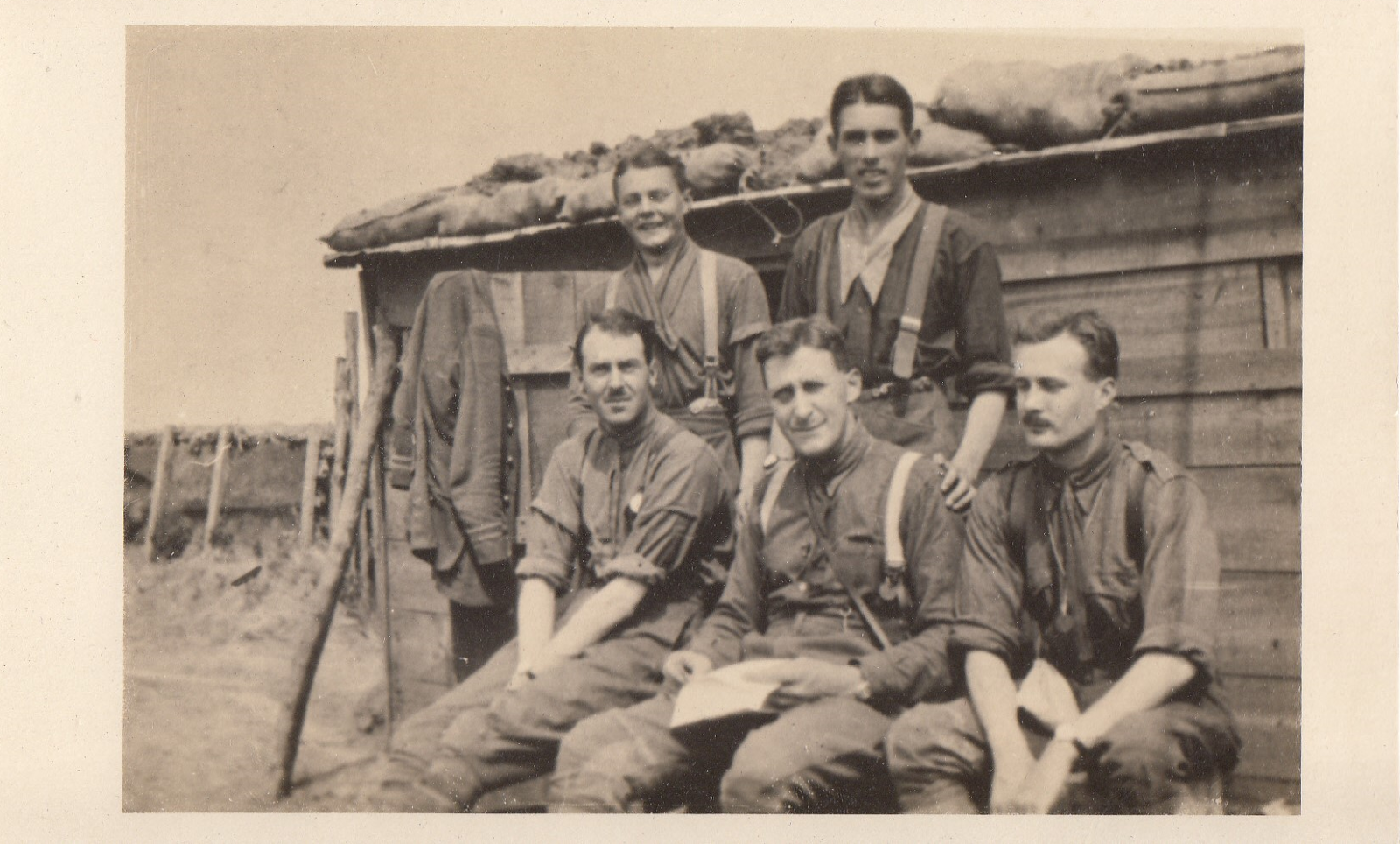Bailleul 12th November 1914. Showing ASC Transport in the Square.
The original Town Hall is on the right. This was destroyed later in the War.
The battalion left it's billets in St. Omer at 9 a.m. on November 10th for the 15 mile march to Hazebrouck.
In his small pocket diary John Baber recorded his impressions of the march.
"Tuesday, away fairly early. Very damp & cold. Oh. that pave. Billets Hazebrouck. D'md good bed. No guns."
John also wrote an short account of these events much later in his old age.
"From the camp we marched by easy stages towards Hazebrouk. At one point, approaching a fork in the road I was sent forward to make sure we took the right road, and there approaching, were the remnant of a squadron of French cavalry. With steel breastplates, brass helmets with plumes, some shorn off, with men bandaged and obviously fresh from a fight with Uhlans, they were a fit subject for a painting by Lady Butler of past battles."
John Baber also recorded his impressions of the following days march to Bailleul, which proved more difficult than expected, and which did not reach its original destination, due to the congestion encountered on the roads.
"Wed. Paraded in square 9.30. More pavee. Scarlet Fever in E Coy. Stopped at Bailleul for night instead of Steenwerck. Factory barracks & Munsters raised hell. Fed well at Hotel Des Canons d'Or. Heavy firing all night."
The Hotel Des Conons d'Or was a new one established in 1910 in Bailleul, and which had been an early cinema showing films before the war. Prices ranged from 1 to 0.25 francs francs. [1]
Writing in a letter to his sister, Frances Baber John expands on the battalions encounter with the Munsters.
"All the regulars here love to pull our men's legs, & to pour out lurid stories of the war;"
Captain Henriques in the regimental history also wrote about the refugees they had met on the road to Bailleul, writing long after the end of the war.
"The second day's march brought the Battalion to Bailleul. The road was crowded with numbers of refugees, the old people riding in carts, the younger ones walking and pushing handcarts and perambulators piled high with a motley assortment of household goods hastily gathered together. Most of them seemed to accept their lot in a curiously matter of fact way, though here and there one saw signs of real distress."
Private Bob Brookes who was one of the Battalions signallers has also left an excellent diary that is available on the internet, and is well worth reading in parallel with this blog. He paints a very different and more immediate view of the refugees crowding the roads.
From the direction of the Firing Line came streams of men, women and children, carrying all they could with them, having had to leave their homes. Very stained and weather-beaten, for they had been walking for a long time, having had to rush away from their houses, risking their lives from shell and rifle fire. They carried large bundles filled with articles (some had a blanket-full on their back) and they were crying enough to break their hearts. We got into communication with them, and they informed us that the Germs, who had taken all food and everything of value from them, were again advancing. Many of them had been in Germs’ hands for some time, and they told us many woeful tales. It is as sad a sight as one could possibly see." [2]
Brookes also mentions the arrival of Scarlet Fever in Captain Shattock's E Company and how hard the marching was proving for troops who had little previous experience of marching, and who had been issued with new boots shortly before the left England. Brookes as a signaller was on one of the battalions bicycles.
"11.11.1914 At 9.30 am next morning, Wednesday 11th November, we departed from Hazebrouck, leaving one section of ‘E’ company behind on account of an outbreak of fever. We passed through the village of Borre, and arrived at Bailleul at midday. We were to have gone on further, but there was a strong wind and a drizzle, and the cobbled roads were proving too much for the feet, (I cycled) that the Colonel decided to put up here. The march had been very difficult inasmuch that the ranks had to be broken several times to allow A.S.C. Motor Transports to pass, the road being very narrow. This helped to make the marching harder."
The same view in Bailleul 2008, with the rebuilt Town Hall to the right.
I would very much like to locate both the Convent mention and the Hotel Des Canons d'Or. If you can tell me where they were located, I would be pleased to hear from you. I can be contacted at balmer.nicholas@gmail.com




















